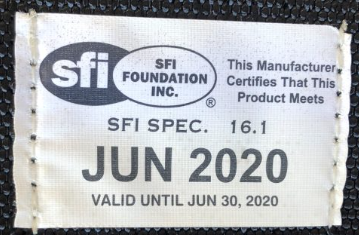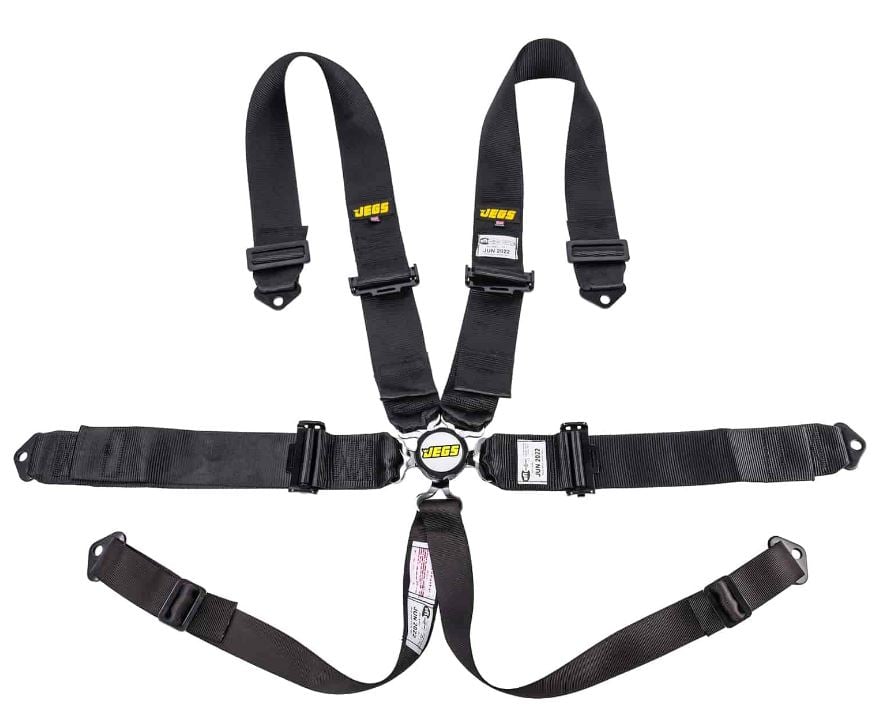
A car racing harness is essentially a seat belt made for the high-speed, high-risk environment of motorsport racing.
Unlike your daily driver's 3-point lap/shoulder-belt setup, racing seat belts have 4, 5, 6, or even 7 mounting points. The extra points not only hold racers more securely but should a crash occur, they spread the impact force to minimize injury.
But that's not all; racing harnesses often boast flame-resistant materials, safety padding, quick-release buckles, and more. Depending on the type of racing you're doing, a specific belt configuration, or certain features, may be required to compete.
Thankfully, organizations like FIA (Fédération Internationale de l'Automobile) and SFI (Safety Foundation Inc) set strict safety standards to ensure racing equipment has what it takes to keep you safe.
For example, NASCAR requires an FIA-certified 5 point racing harness that's compatible with a HANS (Head And Neck Support) device. Show up to the track without a certified racing harness, and you won't be allowed to compete.
Never fear; JEGS is here, with an in-depth race harness buying guide covering everything you need to know to make an informed purchase.
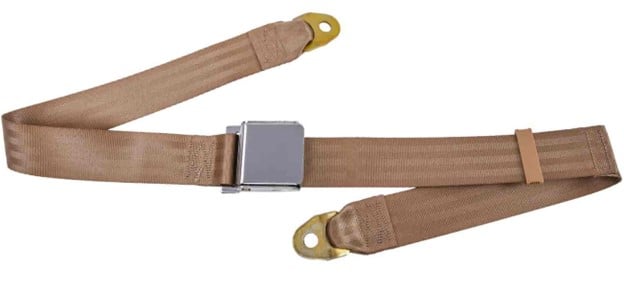
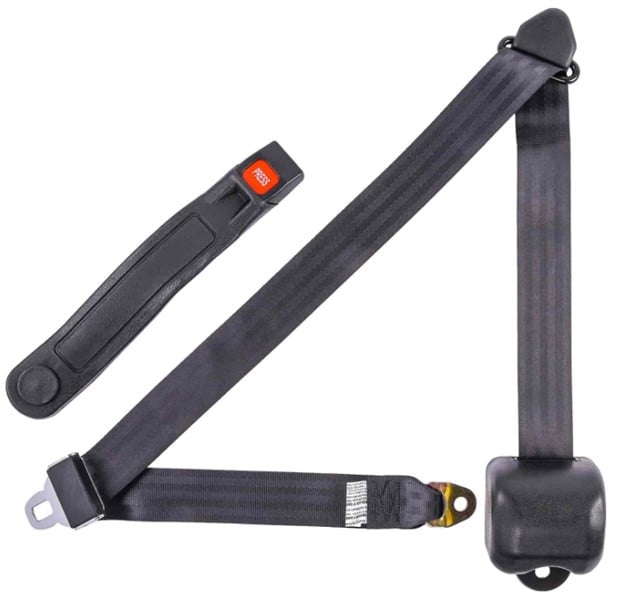
Do You Need a Race Harness?
If you're like most people and use your vehicle primarily for commuting or running errands, a race harness is likely overkill. The standard 3-point seat belt found in most street cars is plenty safe for regular driving and has the convenience of single-point release.
For daily driving, race harnesses can be inconvenient due to their complexity and the added time to properly secure them. You should also note that some jurisdictions do not allow racing harnesses on public roads, which may get you fined. What's more, unless properly installed, they could actually compromise safety instead of enhancing it.
A race harness makes more sense if you occasionally take your car to the local track for some adrenaline-fueled fun. In these high-performance situations, the extra security of a 4, 5, 6, or 7-point harness can help hold you in place more securely, minimizing movement during rapid maneuvers and potential impacts.
For professional racers, a high-quality racing harness isn't just recommended—it's a must. Competitive racing presents major risks; every possible safety measure, including a certified race harness, should be in place.
Safety Features & Certifications
Now that you better understand what a race harness is and why and when they're needed, let's review the different safety features and certifications you may want to consider when shopping.
Safety Features
- Strap Design & Adjustability: The first consideration is the strap design and adjustability. For most racing harnesses, the straps are two or three inches wide and made of durable materials like nylon or polyester. The width and material of the straps impact their strength and stretch properties, important factors in a collision.
Adjustability allows the harness to fit comfortably and securely, no matter the driver's size. A well-adjusted harness ensures that forces are correctly distributed across the body in case of an impact.
- Quick Release Buckle & HANS Device Compatibility: The buckle is another key part of choosing a racing harness. Most use a quick-release buckle, which is crucial in an emergency situation where the driver needs to exit the car quickly.
Additionally, many racing harnesses are designed to be compatible with a HANS device.
This device, mandatory in many racing events, protects the driver's head and neck from injury during a crash, and a HANS-compatible harness ensures that this protection is seamlessly integrated into the harness system.
- Load Spreaders & Harness Padding: Load spreaders are used in racing harnesses to distribute forces applied to the body during a crash. They help lessen the risk of injury by spreading the impact over a larger area.
Harness padding also adds to the safety quotient by reducing the pressure on the body and adding comfort. This is particularly important on the shoulder straps, where a lot of force can be applied during a crash.
- Flame-Resistant Materials & Durability: Racing harnesses often use flame-resistant materials to provide protection in case of a fire, a potential risk in motorsport.
Durability is also crucial as the harness must withstand extreme conditions without tearing or breaking. The materials used, the quality of the stitching, and the overall construction of the harness all contribute to its durability.
Certifications
- SFI: The Safety Foundation Inc. is a non-profit organization that sets standards for motorsport safety equipment. An SFI-certified racing harness assures that it has undergone rigorous testing and meets the safety benchmarks set by the organization.
The SFI certification is widely recognized and is often a prerequisite for participation in many racing events, including NASCAR and F1. So, when you buy a harness with an SFI certification, you know you're getting a piece of equipment that's been tested for reliability and safety under high-stress conditions.
- FIA: The Fédération Internationale de l'Automobile is the international governing body for motorsports. Similar to SFI, the FIA has a stringent set of safety requirements that racing equipment must meet.
An FIA-certified racing harness has not only been tested for safety but also for performance under the extreme conditions of professional racing. FIA certification is globally recognized and is often required in international racing events.
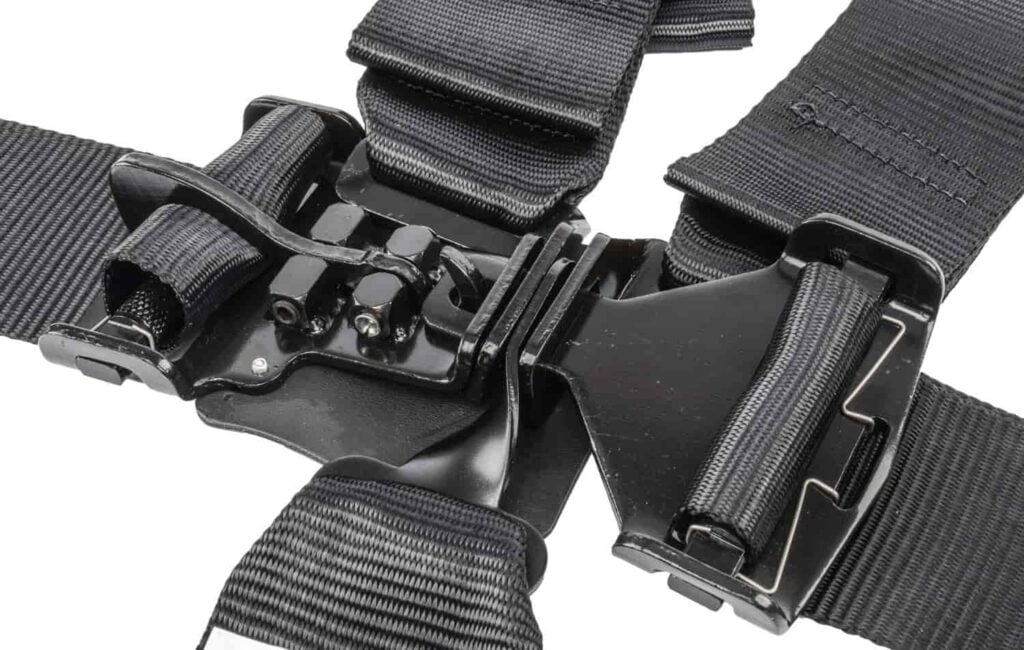
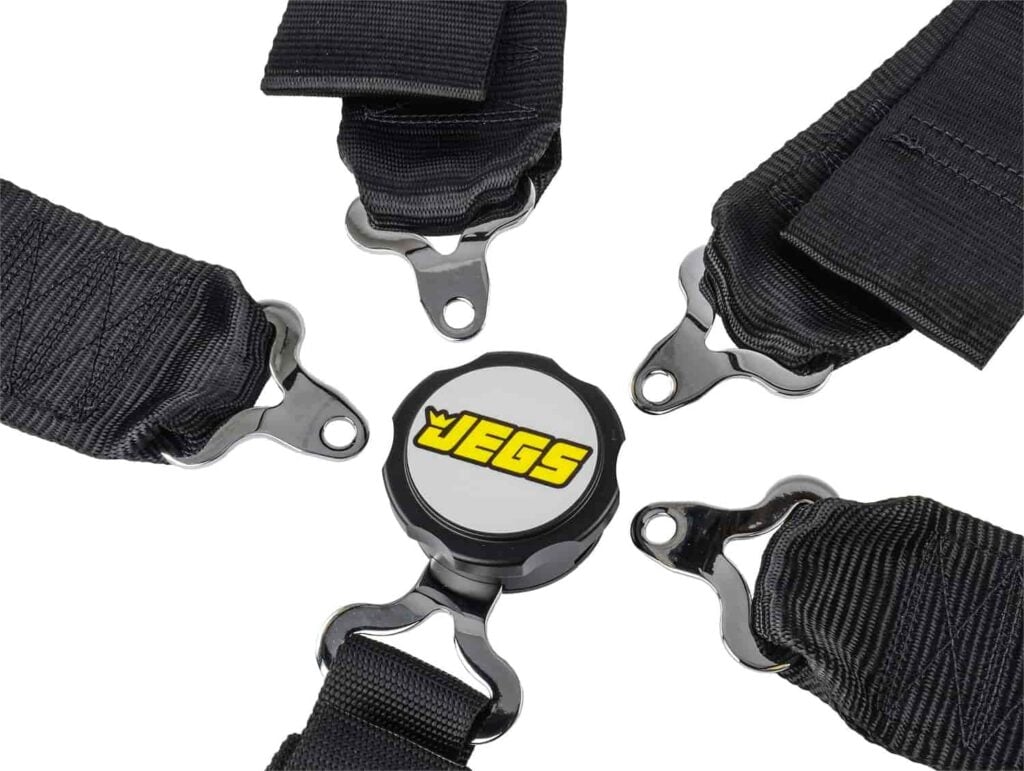
Racing Harness Ratings
When it comes to racing harnesses, "ratings" refer to the safety certifications they have obtained from organizations like the SFI and FIA. Harnesses with an SFI certification may have a rating of "SFI 16.1" or "SFI 16.5".
An "SFI 16.1" rated harness has been tested and verified to conform to SFI's strict safety and performance standards. These harnesses are generally 3 or 4-point designs, ideal for racing events like amateur drag races and local autocross events.
A 3-point harness is similar to a conventional car seat belt, while a 4-point harness offers an extra belt for additional stability.
In contrast, an "SFI 16.5" rating indicates that the harness has withstood more demanding testing, such as higher load tests for webbing, thread, and buckle strength. This higher standard, usually associated with 5 or 6-point harnesses, is typically required for professional racing series like NASCAR and IndyCar.
Racing safety harnesses are marked with the date they were certified. SFI harnesses are good for two years from the date on the harness, while FIA harnesses are good for five years from the date on the harness. After the expiration date, the harness either has to be retested and recertified by the manufacturer, or replaced.
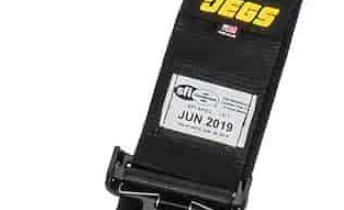
A 5 point racing harness introduces a single strap between the legs, while a 6-point harness provides two for even better security and comfort.
FIA-certified harnesses often carry ratings like "FIA 8853-2016". Harnesses with this rating have endured rigorous FIA tests and are approved for use in FIA-sanctioned races until the expiration date indicated on the harness label.
FIA-rated harnesses often adopt a 6-point design, which is the preferred choice for many professional racing events.
Remember that these ratings are valid for a fixed term, usually five years from the manufacturing date. After this time, the harness must be recertified or replaced to guarantee it's still providing reliable protection.
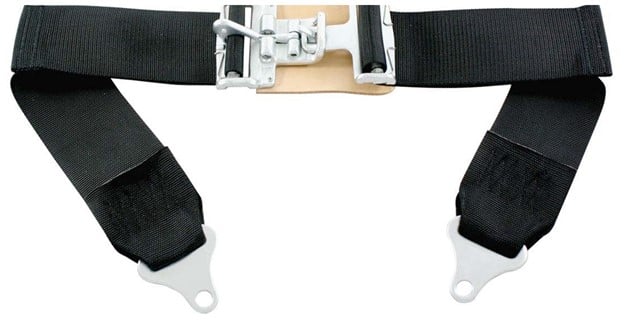
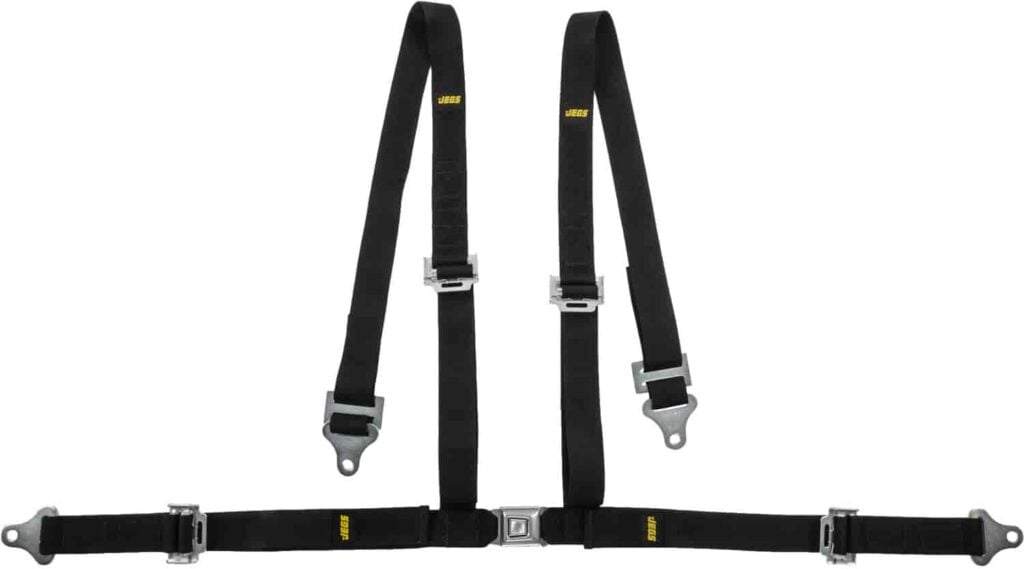
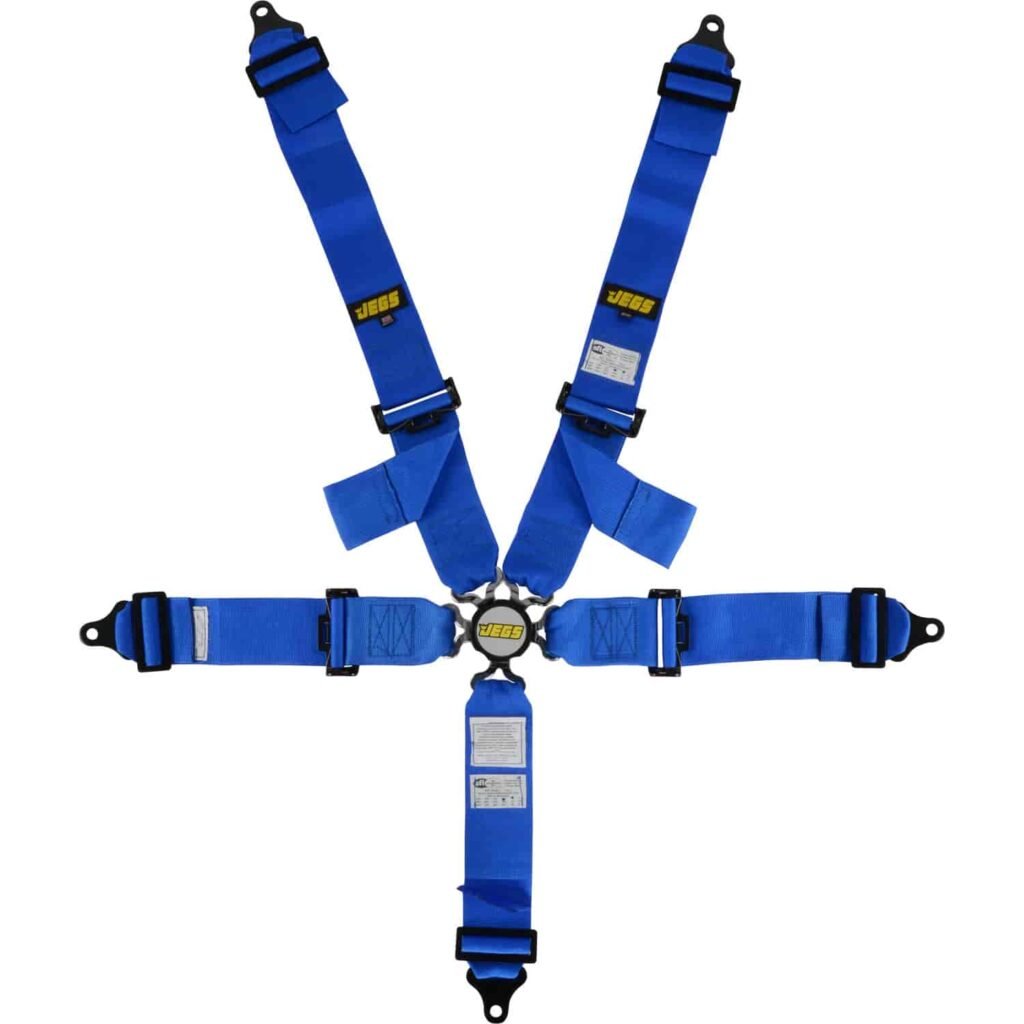
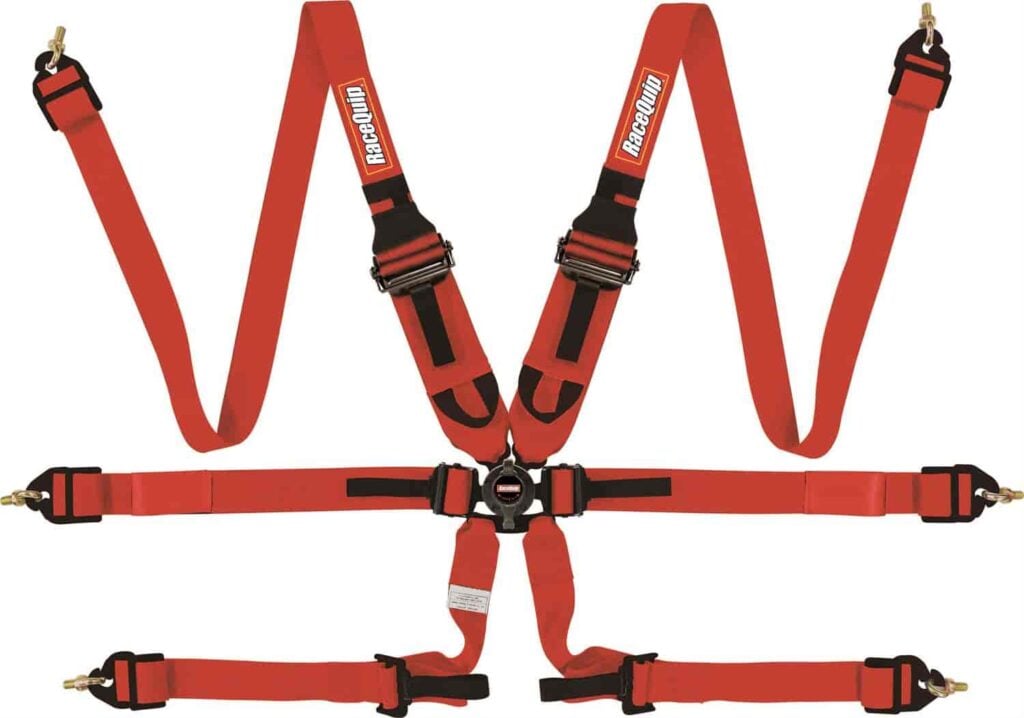
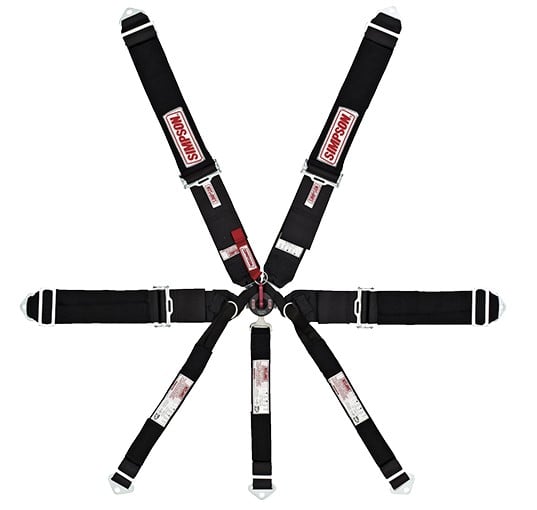
Race Confidently With JEGS
Understanding the complexities of racing harnesses is a must for ensuring your safety on the track. Keep in mind the certifications needed for your event, which will indicate the specific requirements, like the number of mounting points, necessary safety features, etc.
Investing in a racing harness is a cost that comes with the territory. Lower-end harnesses, while still reliable and safe, often start around $100. On the higher end, especially for those used in professional racing circuits, the cost can climb well over $500.
At the end of the day, you should never compromise on safety equipment, as it's the last line of defense in a high-speed environment. No matter your budget, there are options available that can provide the security you need.
With your newfound knowledge, you can take the next step: explore JEGS' wide array of racing harnesses. With quality products and expert advice, JEGS is ready to help you race confidently and safely.
